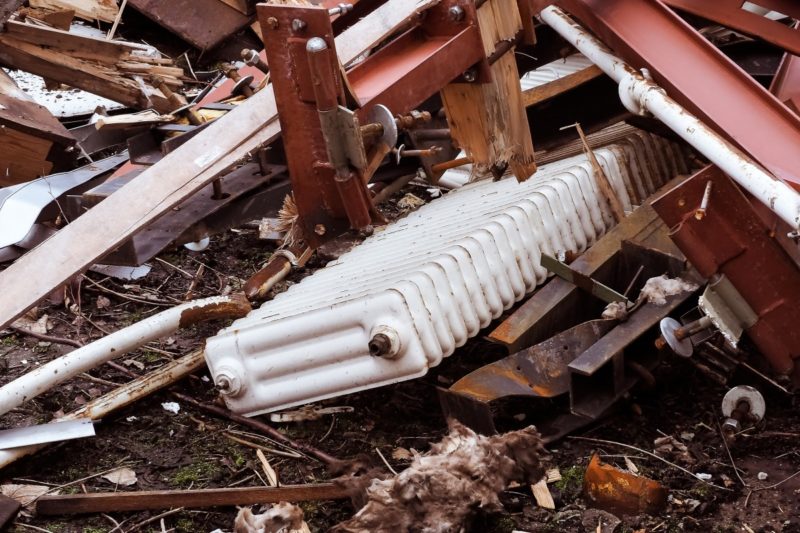Have you ever wondered what is a radiant heater? No more wonders. You are in the right place. The Radiant heating system provides radiant heat to a home’s flooring and paneling in the ceilings and walls. Such systems rely heavily on radiative heat exchange, which involves infrared radiation delivering radiant heat from a hot surface onto things and people in the area.
Radiant warming is the impression you get when you go into a room and feel the heat of the warm cooktop component.
Floor heating or just floor heating is the name of radiant heating situated on the floor. Radiant heating, despite the title, relies mainly on convective, or the natural movement of heat inside space as the air heated by the floor raises. Keep reading to learn more.
How Does Radiant Heater Works?
Electromagnetic waves are used to convey radiant heat. Electromagnetic waves are caught and assimilated, transforming their energy into warmth. The things transfer the brilliant radiation in the space, which heats the environment in the same way that the clothing absorbs heat. Radiant heaters, such as the sun, may warm despite coming into contact with the heat source. This form of heating is helpful in a manufacturing environment if people don’t want to directly touch the object you’re heating or even when you don’t want to contaminate it.
Advantages Of Radiant Heating
Radiant heating provides a lot of benefits. Since it removes pipe inefficiencies, it is much more effective than baseboards warming and typically better efficient as forced-air heat. Allergy sufferers generally prefer radiant heat since it does not spread germs way forced-air units do. Hydronic systems require so little energy, which is advantageous for households off the network or in places where electricity is expensive. Hydronic methods may warm the liquid with several energy resources, such as regular oil-fired boilers, timber boilers, solar hot water systems, or a mixture of these.
Types Of Radiant Heater
Radiant heaters are of various types, and each has its specification and usage. These heaters are more efficient than other convection heaters. The below-mentioned types of radiant heaters help you find the difference between each heater, and you will learn what is a radiant heater.
#1. Wall-mounted radiant heater
The wall-mounted radiant heaters are indeed a relatively new addition to the marketplace, and they have the advantage of being small and taking up no floor space. These wall heaters provide even heat distribution from head-to-toe. As they’re installed and above the floor, those devices are entirely safe to be used in households with pets or children. You may also acquire a fireplace-style heater that hangs on the wall. Read more about wall mount radiant heaters.
#2. Permanent floor radiant heaters
Such radiant heaters are placed immediately beneath the floor. Although tiles may get quite chilly in the winter, flooring radiating warmers are a frequent choice for usage in the bathroom. These heaters always keep the floor heated in colder times.
#3. Ceiling radiant heaters
The radiant heating modules of this type are mounted inside the roof. This heat is then transferred to persons or things under the room’s ceiling. The radiant surround heater is yet another instance of this technique. Cove heaters blend bright results of those actions heat and guide it back to the ground from the roof. These devices disseminate warm air throughout the space at a low temperature to produce the lowest possible degree of heat transmission. This method reduces energy losses while also saving up.
#4. Standalone radiant heaters
Standalone radiant heaters are compact, transportable heaters that may be carried about space or taken about with yourself. Many folks simply call them “portable space warmers.” The main advantage of these devices is how you can carry the warmth with you wherever you go. They’re particularly ideal for sheds and small places as a radiant warmer. Such standalone heaters, similar wall-mounted variants, may also be made to seem like a campfire.
When Is A Radiant Heater Appropriate?
Whenever a radiant heater, on either side, is put connected to the people or items which need to be heated up, this will perform much more effectively. It doesn’t seem whether the space is open and closed in this case because it’s the particular people or items which are being warmed, not the air themselves.
Furthermore, because radiant heaters do not use blowing air to warm a place and hence do not create draughts, they can be lifesavers for those with allergies, lung, or other respiratory problems. Lastly, radiant warmers are suitable for apartments with a particular function, are considerably smaller, but maybe left unattended for long periods or during the day night.
Interior instances of this style of the area include restrooms and closets. Cellars, basements, temperature-controlled storing buildings, terraces, and shops are all kinds of places wherein radiant heat is a fantastic, energy-efficient option.
It’s A Wrap!
We are happy to know that you have learned what is a radiant heater. These heaters are for small spaces and are much energy-efficient. Radiant heaters are easy to operate if you make your heater clean all the time; its life grows up, and you can use your heater for a more extended period. Thank you, friends, for staying with us.
You may want to read related articles; know how to clean a wall heater and how to warm up a room without a heater.

